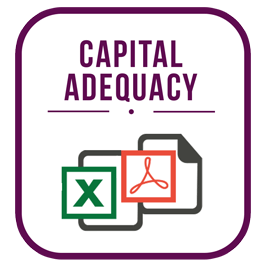Basel III Liquidity Framework ICAAP Training Value Pack
About the Course
The ICAAP overview and concepts course begins by presenting some of the definitions and terminology related to the course such as transition matrix, PD, LGD & EAD and their stressed counterparts.
This is followed by a brief background of capital adequacy regulation covering Regulation Q, Basel I amendments to the capital accord, Basel II’s minimum capital requirements, supervisory review and market discipline processes .The framework and requirements of ICAAP are discussed.
An overview of ICAAP report is presented. Items to cover in the sections Executive Summary, Internal Capital Adequacy, Aggregation and Capital Planning are mentioned. A sample ICAAP report is reviewed which includes the policy document review, methodology for capital allocation to various risks, and risk aggregation.
Next, the process and risks of building and using internal models employed in ICAAP are reviewed. Ways to prevent or limit the risks on internal models are outlined. Important points to consider and limitations of a Probability of Default estimation model are presented.
The final section presents stress testing methodologies for credit risk (e.g. NPL stress test, increase in NPLS, shift in NPLs, Fall in forced sale value of mortgaged collateral, Transition matrix stress test, Profitability Analysis stress test), market risk (e.g. interest rate shocks, equity shocks, worst case MTM stress tests) and liquidity risk (Fall in liquid liabilities, Fall in MVE (Duration Gap).
An annexure is included that provides a comparison of ICAAP requirements and processes for various Central Banks.
The ICAAP Sample report and template course presents a suggested template for reporting ICAAP for a hypothetical bank “Demo Bank”. The sample report:
- Describes the methodology & risk aggregation for capital allocation for each risk
- Reviews the credit portfolio of the bank including portfolio composition, customer base, maturity profile and facility & industry concentration
- Provides commentary on the internal capital adequacy of the bank in particular of its credit risk
- Lists assumptions & data sources used for the exercise
The Basel III – Liquidity Framework course describes how the supervisory liquidity ratios, Liquidity Coverage Ratio (LCR) and Net Stable Funding Ratio (NSFR) are calculated. 5 metrics for monitoring liquidity risk are then discussed. This is followed by a framework for estimating liquidity risk capital for a bank. Real world liquidity risk case studies for Bear Stearns, Lehman Brothers, AIG are presented.
The ICAAP Case Study – Illustrative reports course showcases some of the reports used for the regulatory and internal capital adequacy reporting and assessment purposes. A sample bank’s published balance sheet, income statement & maturity profile are used to generate these reports. Assumptions as to individual hypothetical transactions that comprise the balance sheet and parameter selection for report generation are made.
The broad purpose of each report is explained and risk numbers interpreted.
Please note: the EXCEL versions of the reports included in the zip file are just template files and do not show any formulas or workings behind the values displayed in the reports.
The Capital Adequacy Requirement (CAR) - Report Validator EXCEL worksheet de-mystifies the black box surrounding CAR calculations. It takes in the financial statement/ balance sheet data as input and then transparently shows the calculations and generates output for the following 6 reports:
- Risk Weighted Amounts for Credit Risk – On Balance Sheet Exposures
- Specific Market Risk Capital Charge for Issuer Risk
- General Market Risk - Debt Securities
- Risk Weighted Amount & Capital Charge for Operational Risk
- Overall Capital Adequacy Ratio Summary
- Internal Ratings Based (IRB) Credit Risk Capital Charge
The worksheet serves as a simple validator as well as a teaching tool by exposing the underlying calculations for each report.
The How-to guide is a detailed guide to entering data, report parameters and using the EXCEL Spreadsheet.
Please note that this product is only a validating tool, not a reporting platform.
Learning Objectives
After taking this course you will be able to:
- Explain conditional and unconditional transition matrixes
- Define Probability of Default, Loss Given Default and Exposure after Default
- Outline the history of capital adequacy regulation from Regulation Q to Basel III
- Describe the ICAAP framework and requirements
- List the items to include in the Executive Summary, Internal Capital Adequacy, Aggregation and Capital Planning sections of the ICAAP report
- Describe the risks of building and using internal models
- Stress test credit risk, market risk & liquidity risk using a number of approaches
- Prepare a template for ICAAP reporting
- Compute LCR & NSFR
- Describe 5 risk metrics used for monitoring liquidity
- Summarize a framework for estimating liquidity risk capital
- Identify real world cases of liquidity risk management failures
- Interpret various reports used for regulatory and internal capital adequacy purposes
Prerequisites
The candidate should have some familiarity with debt, equity & FX markets and risk management frameworks. They should also be comfortable with basic mathematics, statistics, probability and EXCEL.
Target Audience
The course is aimed primarily at banking professionals and individuals responsible for risk management within banks who need to review or refresh their understanding of Capital Adequacy regulations for work, professional review, audit or personal development.

